Astronomers Confirm Second Most-Distant Galaxy Ever, And Its Stars Are Already Old
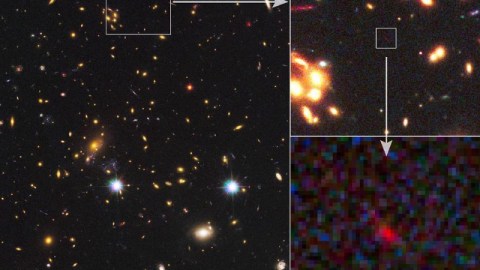
Even before we have the James Webb Space Telescope, a controversy over when the first stars formed is growing.
As far back as our most powerful telescopes have ever looked, we’ve never yet found the limit of where stars and galaxies cease to exist. There’s a big gap between the first galaxy we’ve ever found — GN-z11, from when the Universe was only 400 million years old — and the Big Bang’s leftover glow, from when the Universe was 380,000 years old. In between, we know the first stars must be there, but we don’t have the capabilities to directly see in that range. Until we get the James Webb Space Telescope, we’ll only have indirect evidence to guide us.
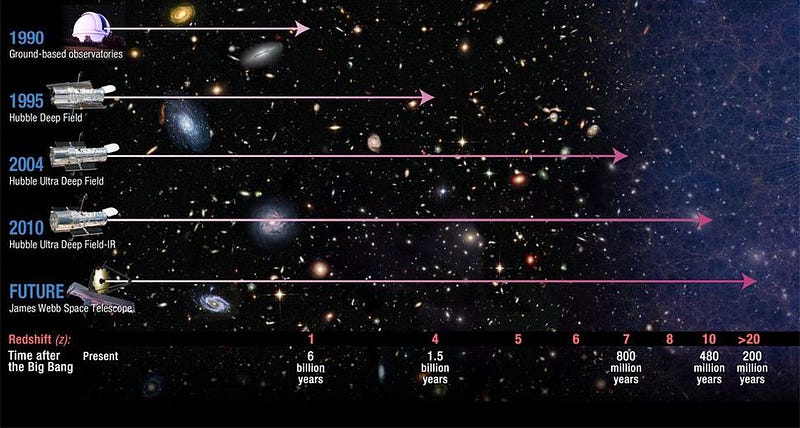
But as far as indirect evidence goes, we just got a huge boost. Scientists have just confirmed the second most distant galaxy of all: MACS1149-JD1, whose light comes from when the Universe was 530 million years old: less than 4% of its present age. But what’s remarkable is that we’ve been able to detect oxygen in there, marking the first time we’ve seen this heavy element so far back. From the observations we’ve made, we can conclude this galaxy is at least 250 million years old, pushing the direct evidence for the first stars back further than ever.
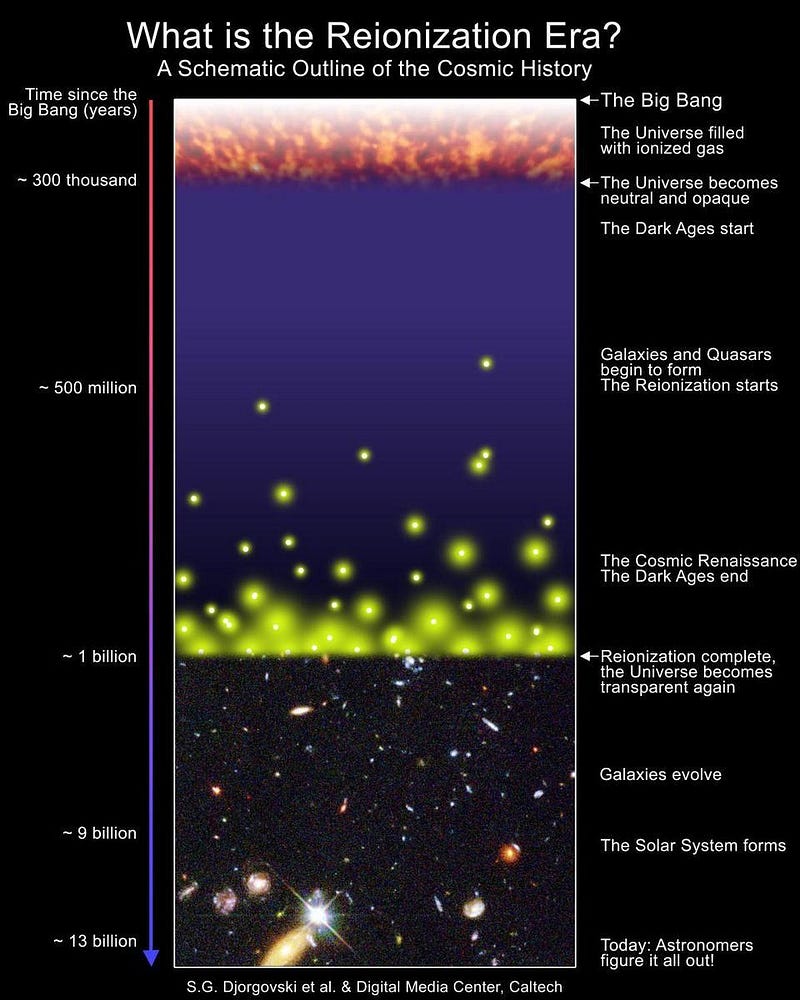
Based on what the Universe is made out of: 68% dark energy, 27% dark matter, 4.9% normal matter, 0.1% neutrinos and a little bit (~0.01%) of radiation, we can simulate how and when it ought to form stars and galaxies. Since we can measure the initial properties it had directly when it was 380,000 years old, all we need to do is plug in the laws of physics and evolve it forward in time. When we do, our best simulations indicate a remarkable story of a cosmic web-of-structure building up over time, culminating in evolved galaxies and groups/clusters of galaxies separated by vast cosmic voids in this expanding, accelerating Universe.
If the laws of physics hold as expected, we expect that there will be a period of the Universe — the dark ages — where matter is gravitationally being drawn into these overdense regions, but has not yet collapsed or contracted enough to form stars. The very first stars may take anywhere between 50 million and 200 million years to form, and then, afterwards, large amounts of star-formation should happen all at once. The smallest star clusters will merge together into larger ones and eventually into proto-galaxies: the building blocks of the galaxies we see today. Eventually, some 550 million years after the Big Bang, enough stars will have formed that the Universe will be cleared of its light-blocking neutral atoms, and we’ll be able to see everything with a powerful enough optical telescope.
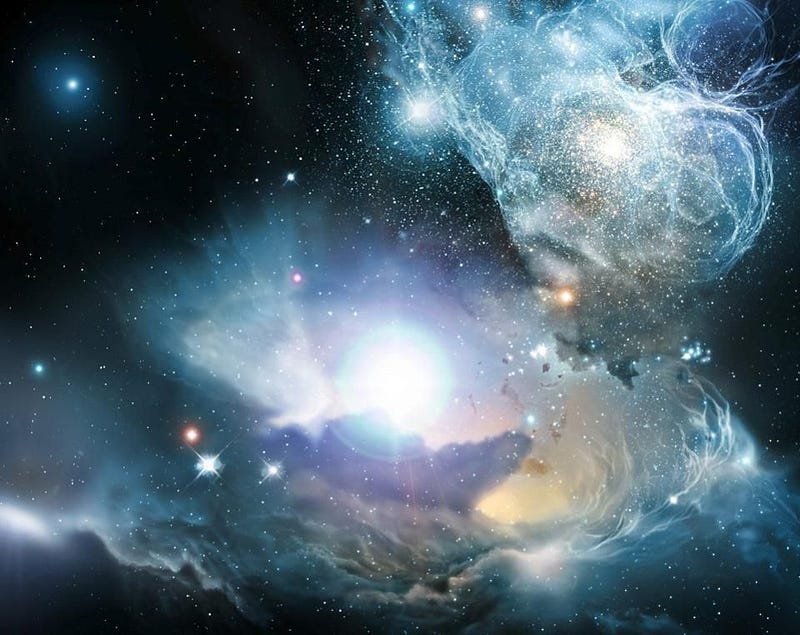
But when did these first stars turn on, in earnest? What are their properties, and how are they different from today’s stars? How fast do they burn out, and when do the first stars with rocky planets and/or the potential ingredients for life form? And is there a preferred region of space where all of this happens?
Up until this point, we’ve been able to go back to around 400 million years after the Big Bang through NASA’s great observatories, finding young galaxies that are already quite evolved. Indirectly, we’ve been able to measure, very recently, a specific signature that points to stars forming even earlier: when the Universe was between 180 and 260 million years old. We thought were were going to need to wait until the James Webb Space Telescope came along to confirm this.
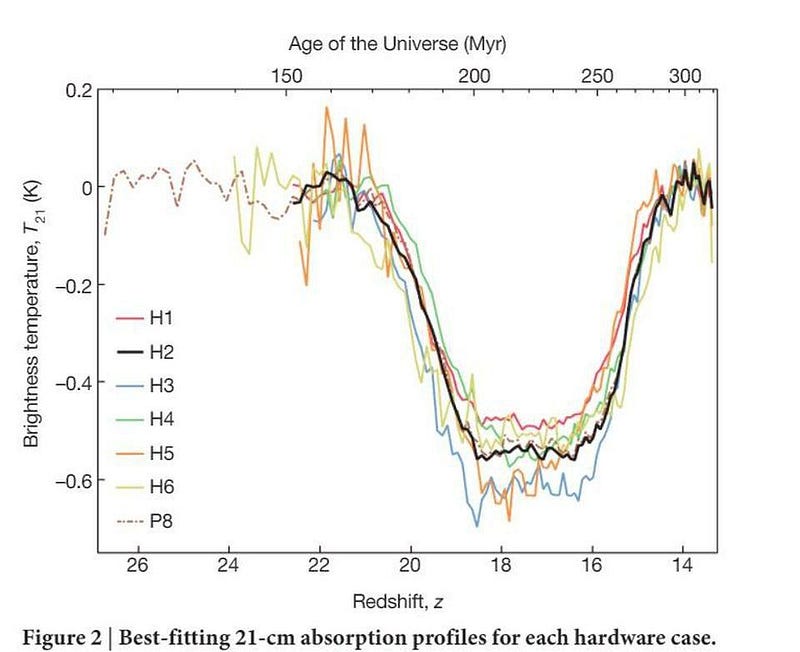
But a new study, published on May 16th, 2018 in Nature, may have just given us the confirmation we need that stars do, in fact, exist at those early times. There are a number of candidate ultra-distant galaxies out there: galaxies whose ultra-red (or even infrared) colors indicate that they’re probably very far away. But until these distances are confirmed, there’s a chance that they’re mere interlopers. In fact, earlier this week, one of the earliest candidate galaxies was shown to be exactly such an interloper; this happens frequently, and underscores why we demand confirmation.
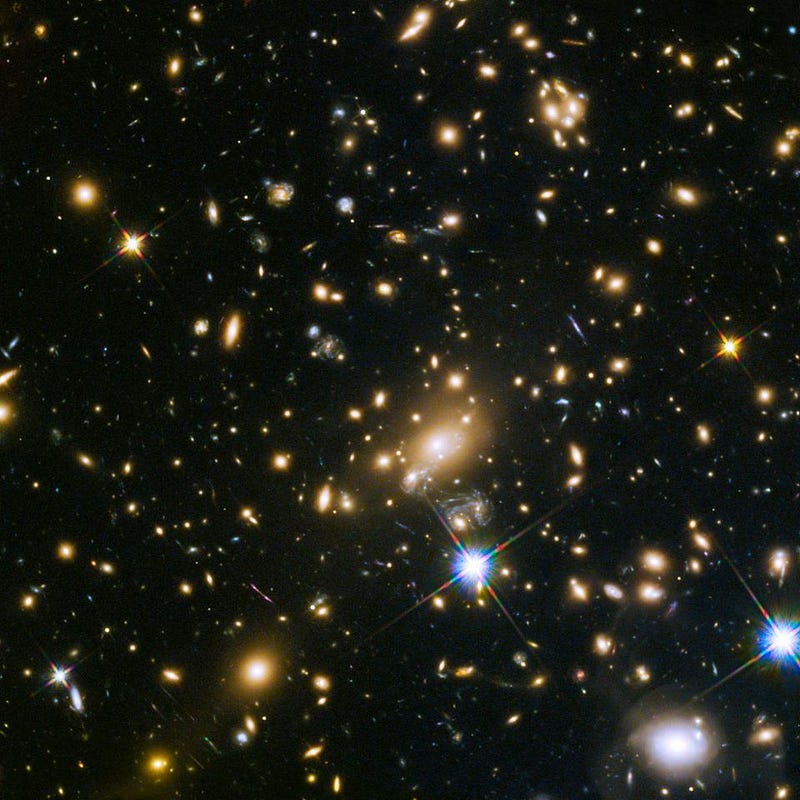
But the galaxy MACS1149-JD1 was indeed confirmed to be as far away as we had thought, making it the second-most-distant galaxy ever seen. And within it, we didn’t just find the ingredients we expect the first stars to have: hydrogen and helium. Oxygen was there too, and while it’s the third-most abundant element in the Universe, oxygen wasn’t created in the Big Bang, but only after the first generations of stars lives-and-dies.
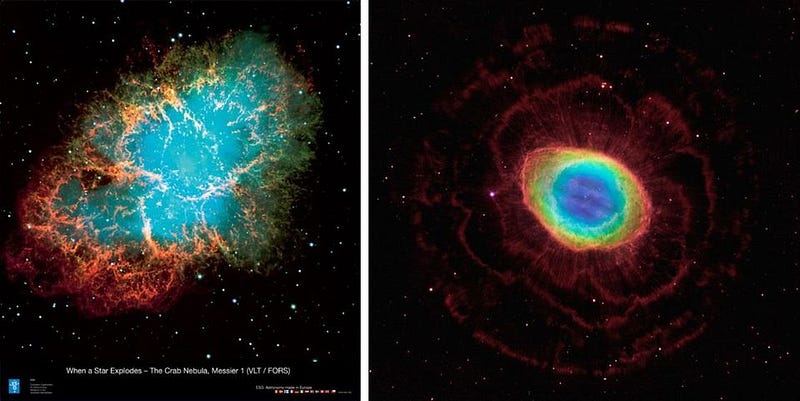
The surefire signature of oxygen and the observed brightness of the galaxy, as well as the hydrogen signatures that helped precisely determine its distance, were observed by a combination of four distant observatories: ALMA, the ESO’s VLT, Hubble, and Spitzer. The brightness indicates that the galaxy has been forming stars for some time, as it requires building-up over time to reach the observed levels. This creates a picture of cosmic dawn for this galaxy that’s consistent with everything else known: where the first stars that were created in order to build this galaxy up formed just 250 million years after the Big Bang.
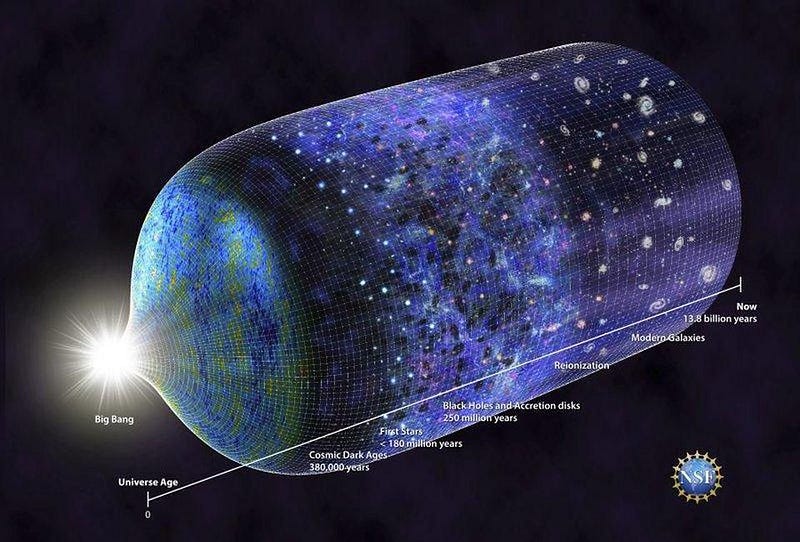
This represents another step into previously uncharted cosmic waters. Never before have we seen a galaxy this distant with a confirmed population of mature stars within it. As Richard Ellis, coauthor on the new study, states:
Determining when cosmic dawn occurred is akin to the `Holy Grail’ of cosmology and galaxy formation. With MACS1149-JD1, we have managed to probe history beyond the limits of when we can actually detect galaxies with current facilities. There is renewed optimism we are getting closer and closer to witnessing directly the birth of starlight. Since we are all made of processed stellar material, this is really finding our own origins.
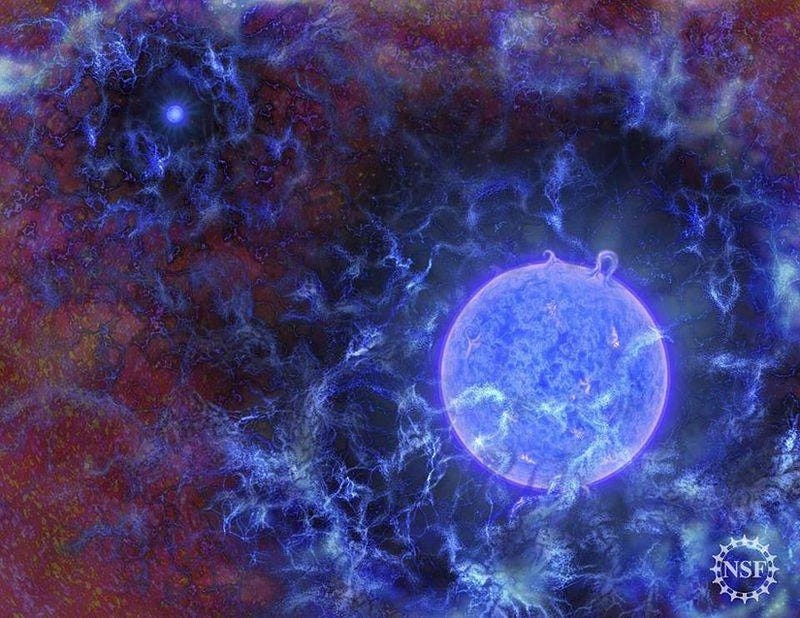
For the first time, we are able to successfully infer the existence of galaxies hundreds of millions of years earlier than we can directly detect them. We’re closer than ever to answering the question of when the very first stars and galaxies emerged from the darkness of the early Universe. And when the James Webb Space Telescope launches in 2020, we’ll know exactly what to expect in terms of the answers to one of the greatest cosmic questions of all.
Ethan Siegel is the author of Beyond the Galaxy and Treknology. You can pre-order his third book, currently in development: the Encyclopaedia Cosmologica.





